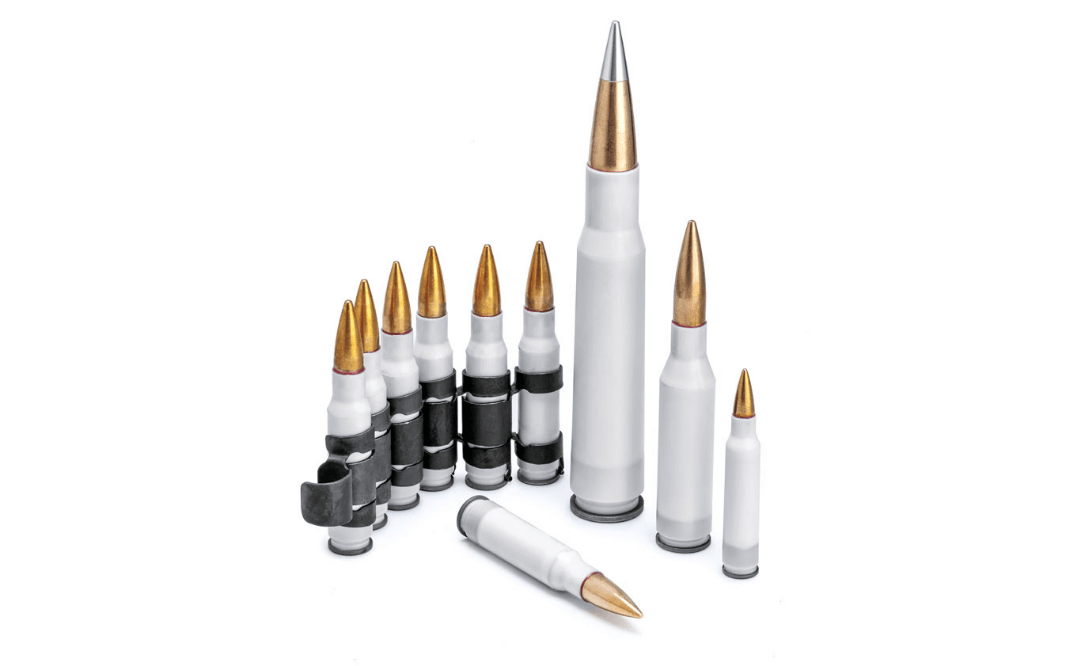- BY PGS
- Aug 08, 2023
Polymer ammunition, also referred to as plastic or composite ammunition, is gaining popularity in the firearms industry due to its unique advantages over traditional metal ammunition. Leveraging advancements in technology and materials, polymer ammunition offers several benefits that cater to the needs of shooting enthusiasts and military personnel. In this synopsis, we will delve into the various advantages of polymer ammunition and its impact in practical scenarios.
Enhanced Mobility and Capacity
One of the key benefits of polymer ammunition is its lightweight composition. In comparison to conventional brass or steel cartridges, polymer rounds are significantly lighter, making them ideal for situations where weight reduction is crucial. This characteristic proves advantageous for military personnel who often carry large quantities of ammunition during missions, as it reduces fatigue and enhances mobility, enabling them to operate more effectively in the field.
Moreover, the lightweight nature of polymer ammunition allows for increased capacity. Manufacturers can design polymer magazines with a higher round count while maintaining a manageable overall weight for the firearm. This advantage is particularly valuable in competitive shooting and self-defense scenarios, where having more rounds readily available can be a decisive factor.
Another significant advantage of polymer ammunition lies in its resistance to corrosion. Unlike traditional metal casings, polymer rounds are impervious to rust or degradation caused by exposure to moisture or harsh environmental conditions. This resilience ensures consistent performance even in adverse situations.
Polymer ammunition also exhibits impressive durability. The polymer casings are resistant to dents and dings, minimizing the likelihood of malfunctions resulting from damaged cartridges. Additionally, the absence of metallic components in polymer ammunition eliminates the risk of cartridge deformation due to rough handling or accidental impacts. Consequently, shooters can rely on polymer ammunition for extended periods without compromising performance.
The composition of polymer ammunition plays a significant role in reducing recoil. The lightweight polymer casings effectively absorb and dissipate recoil energy, surpassing the performance of metal casings. This characteristic enhances shooting comfort and allows for faster follow-up shots, particularly in rapid-fire situations. Furthermore, reduced recoil reduces muzzle rise, leading to improved accuracy and shot placement.
Polymer ammunition also contributes to the longevity of firearm barrels. The absence of metal casings eliminates friction-induced wear and tear. The softer nature of polymer casings minimizes barrel fouling, as they produce less residue and lead buildup compared to traditional ammunition. As a result, firearms utilizing polymer rounds require less frequent cleaning and experience reduced wear on critical components, extending the lifespan of the barrel.
Polymer ammunition offers economic advantages over traditional ammunition. The manufacturing process of polymer rounds is generally more cost-effective, resulting in lower production costs. This affordability can make shooting and training more accessible for enthusiasts, enabling them to practice more frequently and refine their skills.
Moreover, the use of polymer ammunition aligns with environmental considerations. Polymer rounds generate less lead and heavy metal pollution during production, use, and disposal compared to metal cartridges. This reduction in environmental impact is particularly noteworthy on shooting ranges, where lead contamination can be a significant concern. Additionally, the lightweight nature of polymer ammunition contributes to lower transportation costs and fuel consumption, promoting overall sustainability.
Polymer ammunition presents numerous advantages that make it an attractive choice for shooters and military personnel. Its lightweight nature, increased capacity, corrosion resistance, durability, reduced recoil, barrel-friendly properties, cost-effectiveness, and environmental considerations collectively position polymer ammunition as an up and coming option for all shooters and users of firearms.






